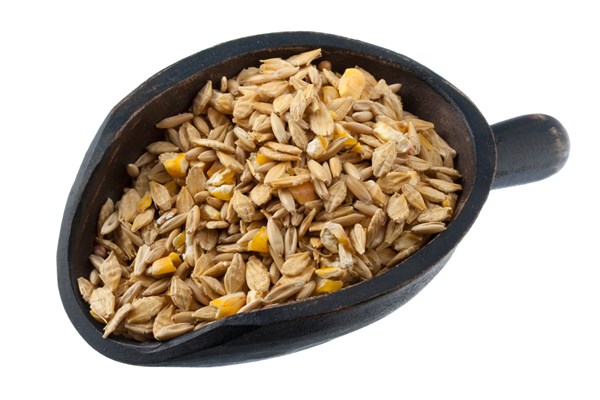 Credit: Thinkstock
Credit: Thinkstock“For an adult horse with moderate activity, feed .75 to 1.0 lbs per 100 pounds of body weight.” These are the feeding instructions for a popular commercially fortified feed. If your horse weighs 1100 pounds (500 kg), you’ll need to feed 8.25 to 11 pounds of feed per day. For enough calories? Enough protein? Enough vitamins and minerals? Yes, to all of the above and more. That’s a lot of feed! That could amount to three to five two-quart scoops (depending on the weight of the feed) per day. And you’ll need to divide it into multiple feedings since meal size should never exceed 4 pounds (your horse’s stomach is small compared to the rest of his digestive tract).
Chances are excellent that you don’t feed anything close to the suggested amount. Does it matter? Yes. Most of what you pay for when you buy a fortified feed are the fortifications. You pay for the vitamins, the minerals, and any special ingredients such as flax seed and soybean meals to provide omega 3s and protein. The only way your horse will benefit from these nutrients is to feed according to directions. Modify them and you’ll need to “supplement the supplement.” For example, this feed provides 100 IUs of vitamin E per pound. If you fed half of the recommended amount, say 5 pounds, your horse would only receive 500 IUs per day. That’s the bare minimum, according to the National Research Council, for a 500 kg horse. Most equine nutritionists agree, however, that this horse at maintenance would do better at amounts closer to 1,000 IUs per day. Furthermore, as activity increases, so does the vitamin E requirement. Therefore, supplementation would be appropriate.
Other nutrients such as omega 3 fatty acids, vitamins A and D, minerals such as copper and zinc, and a host of feedstuffs provided to offer enough fat and protein, may need to be supplemented when less than recommended amounts are fed. As you can imagine, it becomes very tricky to figure out just how much to supplement. You could simply give half the supplement dosage if you are feeding half the fortified feed dosage. But to do this accurately, you should figure out how much your horse would have gotten if fed the recommended amounts, and then calculate how much supplement to feed to make up the difference. If you’re not comfortable with crunching numbers, your best source of information would be a qualified equine nutritionist.
Bottom line… pay attention to labels, weigh your feed using a scale, not a scoop, and keep your calculator handy when making adjustments that supplement the supplement.
Juliet M. Getty, PhD, is an independent equine nutritionist with a wide U.S. and international following. Her research-based approach optimizes equine health by aligning physiology and instincts with correct feeding and nutrition practices. Find a world of useful information for the horseperson at www.GettyEquineNutrition.com: Sign up for Dr. Getty’s informative, free e-newsletter, Forage for Thought; browse her library of reference articles; search her nutrition forum; and purchase recordings of her educational teleseminars. Reach Dr. Getty directly at gettyequinenutrition@gmail.com.


